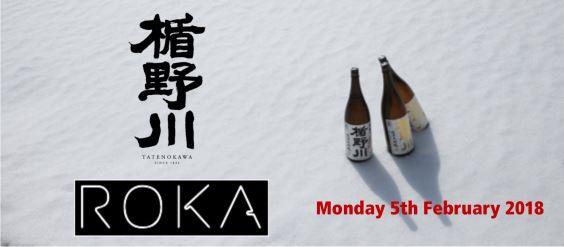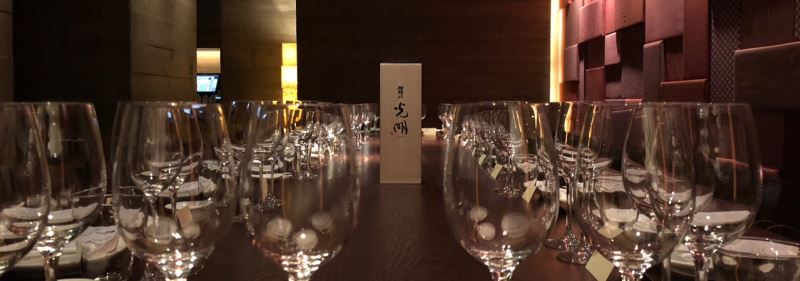
Zenith is the English name for Tatenokawa’s newest sake, a Junmai Daiginjo, made with Dewasansan rice, polished all the way down to 1%. That’s just 1% of the rice grain left after months of polishing. No-one has ever accomplished this before. To celebrate, we invited Naomi-san from Tatenokawa to come over to the UK, teamed up with London’s ROKA Restaurant and, on 5th February 2018, held a dinner to be remembered.
We decided to put on the most prestigious line-up of Tatenokawa sake available, allowing guests to compare different polishing ratios and different rices. Tatenokawa only makes Junmai Daiginjo so each sake was – of course – polished 50% or more.
Masterclass from Naomi-san of Tatenokawa
Kampachi sashimi with yuzu truffle dressing
Tokusen sashimi moriawase
Avocado maki
Tiger prawn tempura
Black cod, crab and crayfish gyoza
Grilled king crab with brown crab butter and crispy shallot
Black cod marinated in yuzu miso
Tenderstem brocolli, ginger and moromi miso
Lamb cutlets with Korean spices
Asparagus with sweet soy and sesame
Iceberg lettuce with caramelised onion dressing
ROKA dessert platter
—-
Quite the menu!

Trying the 1% polished Zenith Dewasansan was an amazing experience. Only 160 bottles were made this year (winter of 2017) so be able to have one for the dinner was a true privilege. Naomi-san explained the challenges Takeshi-san, Tatenokawa’s Head Brewer, encountered and the reasoning behind the 1% (I will go into all this is another blog post – scroll through my blogs if you want to learn more about the 1%).
We got to try the 1% side-by-side with the 8%: very interesting. Aside from the obvious difference in rice polishing ratios, the rice itself is also a differentiating factor. The 1% is made with Dewasansan and the 8% Yamadanishiki (in fact, it’s the highest polished Yamadanishki in the world). The 1% was ethereal, light and precise whereas the 8% had more weight and body, and more expression straight from the bottle. You would, of course, expect this and while it is a function of the difference in polishing, the choice of rice also has a part to play.
No-where can this be seen more than when comparing the 33% and the 18%; 33% is made with Dewasansan and 18% with Yamadanishiki. Expectations would suggest that, while progressing from 33% to 18%, body and flavour would diminish; however, this is not the case. The use of Yamadanishiki for 18% subverts this expectation and results in a richer, denser brew. We decided to try and play off of this comparison by putting the richer foods with the 33% and vice versa for 18%. Some might think this a bit of a gamble but, of course, for a dinner of this quality we had tried all these combos before! It paired perfectly, we chose fattier fish for the sashimi to balance the weight of the 18% sake, and teased out the sweetness of the Dewsansan rice with our food choices for the 33%.
The funkiest sake available during the event was Hatsufune. As the name suggests (First Press) it’s always the first sake to be available each year, usually being released as a very vibrant namazake in late November/early December each year. The zesty and lively profile of this sake paired beautifully with the maki, tempura and gyoza (fried food and namazake = big win!)
Joryu is a great sake – not one I normally import, maybe I should! – with excellent balance between body, acidity and aroma. Pairing this sake with the richest and heaviest flavours on the menu was a no-brainer.
As the end of the evening rolled around we rolled out of ROKA, sated, fattened and with a distinct feeling that we had just experienced something special. A big thank you to the 25 people who attended the event.

